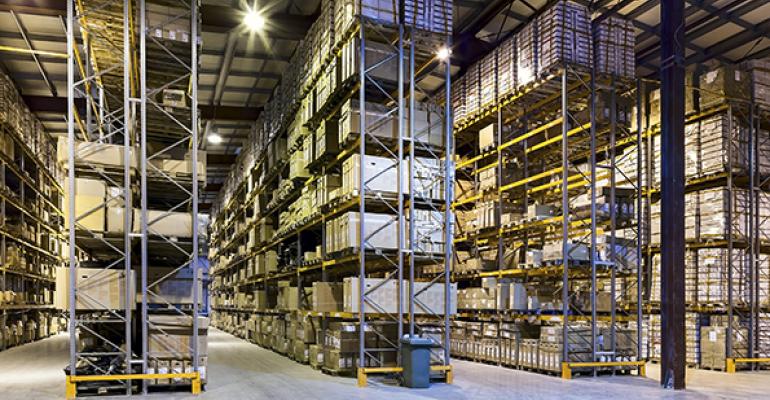By and large, it’s big institutional investors that scoop up industrial assets in the United States. However, there now appears to be more room for a different class of buyers in the industrial sector—high-net-worth (HNW) investors.
Why? Because industrial opportunities in secondary and tertiary markets—where there is likely to be less competition from institutional investors with big pockets—have grown more attractive.
A new report from commercial real estate services company Cushman & Wakefield says many of the dynamics that spawned the industrial boom, including the e-commerce explosion, will continue to play out in ways that bolster strong demand in secondary and tertiary markets, as well as across a broader array of asset sizes. And a recent report from asset manager DWS Group suggests smaller local distribution facilities—although not necessarily in smaller markets—“generally offer superior investment prospects.”
Industrial is “very worthy” of consideration by HNW investors, according to Joshua Harris, clinical assistant professor of real estate at New York University’s School of Professional Studies. In fact, HNW investors can seize investment opportunities through business parks or other relatively small industrial properties, rather than bidding against institutional investors on large industrial assets.
Todd Henderson, head of real estate for the Americas at DWS Group, goes so far as to recommend that HNW investors look at an industrial asset allocation that would constitute about one-fourth of their real estate holdings.
Why are Harris, Henderson and others so bullish on industrial? The standout performance of the industrial sector backs up their bullishness.
A new report co-written by Harris for commercial real estate development association NAIOP notes that in light of historically low vacancy rates in the U.S. industrial sector, which are now hovering around 5 percent, “the risk of a downturn in the industrial space market appears slim … ” Furthermore, the report says, asking rents are at an all-time highs as supply remains tight.
In its recent forecast, Cushman & Wakefield predicts a small imbalance between industrial supply and demand in 2019 and 2020, with new supply totaling close to 550 million sq. ft. and demand totaling just under 500 million sq. ft. during that period. As such, according to the forecast, asking rents will rise by 4.8 percent in 2019, to $6.37 per sq. ft., and by 3.6 percent in 2020, to $6.60 per sq. ft.
Those statistics help demonstrate what Harris describes as “a much better potential for a longer runway” for industrial compared with other asset classes.
Still, experts caution HNW investors to perform careful evaluations before heading down the industrial runway. Although the industrial asset class remains strong, “it is important to remember that real estate is cyclical, and industrial is a high-barrier-to-entry, long-term asset,” notes Jon Pharris, co-founder and president of CapRock Partners LLC, a commercial real estate investment firm based in Newport Beach, Calif. CapRock’s portfolio includes industrial properties.
Industrial also has what might be called a high barrier to ownership.
For instance, Pharris points out that while industrial tenants typically sign long-term leases and don’t often relocate their operations, an owner must be prepared to fill a vacancy, particularly if it’s at a single-tenant property. Finding a new tenant involves lease commissions, deferred maintenance, tenant allowances and other costly factors that can weigh down overall returns, he says.
In addition, industrial properties tend to be “technically intensive” assets, says Harris. An untrained eye might not readily notice quality-related aspects of an industrial asset, such as ceiling height and door width, whereas it might be easier for a typical HNW investor to pinpoint strong and weak facets of a retail or multifamily property, he notes.
On top of that, an industrial asset usually lacks the “trophy feel” that some HNW investors prefer, Harris says.
Another major caveat: brokers expect prices for industrial assets to climb this year amid heightened competition for a shallow pool of available properties.
If a HNW investor decides to dive into the industrial sector, he or she should ensure extensive due diligence is conducted, according to Pharris. That means paying for various third-party reports, such as property assessments, title reviews and geotechnical analyses.
“The cost of these reports can quickly add up, but not having a complete analysis will inevitably lead to trouble down the road,” Pharris says. “If a high-net-worth investor is not sophisticated in acquiring industrial real estate, they should consider hiring an outside company to manage the due diligence process.”
But sophisticated acquisitions can pay off handsomely for HNW investors.
As noted by commercial real estate brokerage NAI Global, returns for industrial properties are projected to remain high this year—around 11 percent. That compares with returns of 6 percent in the office sector.
“Though [returns] may begin to stabilize by 2020, the industrial real estate division is projected to continue to remain the highest category for returns,” NAI Global says.

